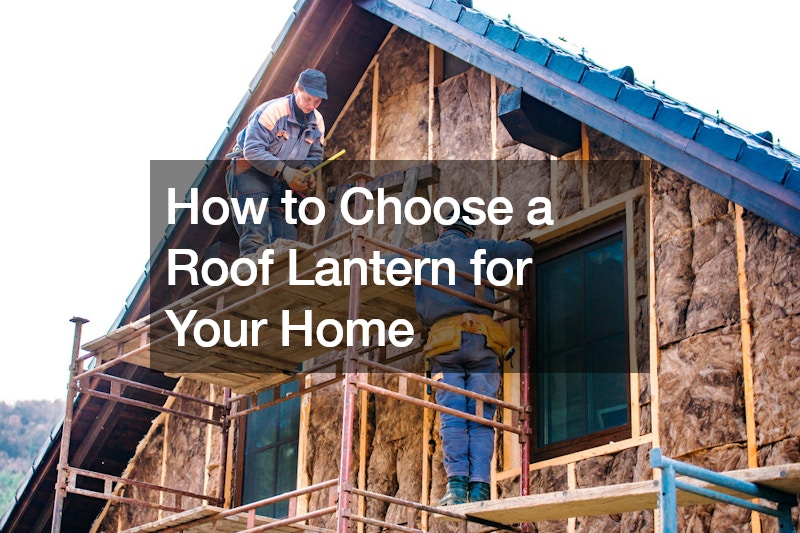
Choosing the right roof lantern for your home can significantly enhance both its aesthetic appeal and functionality. With the abundance of options available in the market, selecting the perfect one may seem daunting. However, with a basic understanding of key factors to consider, you can make an informed decision that suits your needs and preferences.
Understanding Roof Lanterns
Road lanterns, also known as skylights, are architectural features installed on roofs to bring natural light into interior spaces. They are typically designed for flat roofs, providing a stylish and practical solution to illuminate rooms that lack sufficient windows.
A flat roof lantern, specifically, is a pitched structure installed atop a flat roof, allowing light to flood into the room below.
Benefits of Roof Lanterns
The primary benefit of roof lanterns is their ability to maximize natural illumination. By harnessing sunlight, they create a bright and inviting atmosphere within your home, reducing the need for artificial lighting during the day. Additionally, roof lanterns can enhance the visual appeal of both interior and exterior spaces, serving as captivating focal points and architectural features.
Factors to Consider
1. Materials: Roof lanterns are available in various materials, including timber, PVC, and aluminum. Timber lanterns offer a traditional aesthetic but require regular maintenance. PVC lanterns are cost-effective but may lack durability and aesthetic appeal. Aluminum lanterns strike a balance between aesthetics and durability, making them a popular choice among homeowners.
2. Design and Style: Consider the design and style of the roof lantern to ensure it complements your home’s architecture and decor. Choose a design that aligns with your aesthetic preferences and enhances the overall look of your property.
3. Size and Shape: The size and shape of the roof lantern should be proportionate to the space it will illuminate. Consider the dimensions of the room and the placement of furniture when selecting the size and shape of the lantern. Additionally, choose a shape that complements the architectural style of your home.
4. Thermal Efficiency: Opt for a roof lantern with excellent thermal efficiency to minimize heat loss and reduce energy consumption. Look for features such as thermal breaks and insulated glazing to ensure optimal energy performance and comfort.
5. Installation and Maintenance: Choose a roof lantern that is easy to install and requires minimal maintenance. Consider factors such as installation complexity, warranty coverage, and cleaning requirements when making your selection.
Customization Options for Roof Lanterns
1. Materials Selection: Homeowners can choose from various materials such as timber, PVC, and aluminum, each offering unique visual and functional qualities.
2. Color Choices: A wide range of color options allows homeowners to select hues that complement their home’s exterior or interior design scheme.
3. Finish Varieties: Different finishes, such as matte, gloss, or textured, provide additional customization possibilities to match the desired aesthetic.
4. Architectural Compatibility: Consideration of the architectural style of the home ensures that the roof lantern seamlessly integrates with the overall design, whether traditional or contemporary.
5. Personal Preferences: Tailoring the roof lantern to suit individual preferences, such as specific design elements or stylistic preferences, adds a personal touch to the customization process.
Weather Resistance of Roof Lanterns
1. Durability and Structural Integrity: Roof lanterns are designed to endure various weather conditions, boasting sturdy construction and robust materials to maintain their structural integrity over time.
2. Protection Against Rain and Moisture: High-quality roof lanterns feature watertight seals and drainage systems to prevent water infiltration, ensuring interior spaces remain dry and free from water damage.
3. Wind Resistance: Engineered to withstand strong winds, roof lanterns are securely anchored to the structure of the building, providing stability and resistance against gusty conditions.
4. Temperature Extremes: From freezing cold to scorching heat, roof lanterns are designed to withstand extreme temperatures without warping, cracking, or compromising their performance.
5. Maintenance Practices: Regular maintenance, including cleaning and inspection of seals and joints, is essential to ensure the continued weather resistance and longevity of roof lanterns, prolonging their lifespan and performance.
Making the Right Choice
When choosing a roof lantern for your home, it’s essential to weigh the benefits and considerations carefully. Take the time to research different options, consult with experts, and consider your budget and specific requirements. By selecting a high-quality roof lantern that suits your home’s architecture and meets your needs, you can enhance both its beauty and functionality for years to come.
In conclusion, roof lanterns are an excellent addition to any home, offering natural light, aesthetic appeal, and energy efficiency. By considering factors such as materials, design, size, thermal efficiency, and maintenance requirements, you can choose the perfect roof lantern to enhance your living space. With the right decision, you can transform your home into a bright and inviting sanctuary filled with natural light and beauty.
.

